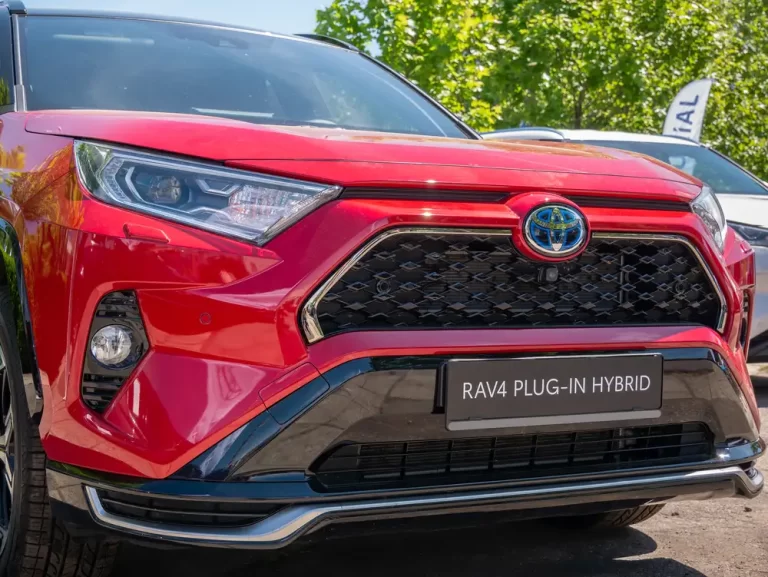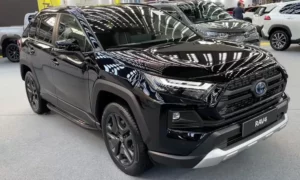Got a “Grille Shutter Inoperative” message flashing on your dashboard? You’re dealing with one of the most common Toyota maintenance headaches. This motorized system controls airflow behind your grille, but it breaks more often than it should. Don’t panic—most fixes are simpler than you’d think.
What Exactly Is Toyota Grille Shutter Malfunction?
Your Toyota’s active grille shutter system works like motorized blinds behind the front grille. These shutters open and close automatically to control airflow into the engine compartment, boosting fuel efficiency and improving aerodynamics.
When this system fails, it triggers that dreaded check engine light and displays warning messages like “Grille Shutter Inoperative, Please See Dealer.” The malfunction affects numerous Toyota models including the Prius, Corolla, RAV4, Camry, and Tacoma.
The shutters get stuck either open or closed, disrupting your car’s carefully calibrated airflow management. While it won’t leave you stranded, ignoring it can hurt your fuel economy or cause overheating issues.
Error Codes That Signal Grille Shutter Problems
When you scan your Toyota’s computer, these diagnostic trouble codes point directly to grille shutter malfunctions:
P05A0 – Active Grille Air Shutter “A” Stuck On
This code appears when the shutters remain permanently closed, blocking airflow even when the engine needs cooling.
P059F – Active Grille Air Shutter Performance/Stuck Off
The opposite problem—shutters won’t close when they should, hurting aerodynamics and fuel efficiency.
U0284 – Lost Communication With Active Grille Air Shutter Module
Your car’s computer can’t talk to the shutter system, usually pointing to wiring or electrical issues.
P05A072 – Active Grille Air Shutter “A” Actuator Stuck Open
The motor that moves the shutters has failed or something’s physically blocking movement.
These codes help pinpoint whether you’re dealing with a simple obstruction or need actual part replacement.
Why Toyota Grille Shutters Keep Breaking
Debris Is Enemy Number One
The biggest culprit behind Toyota grille shutter malfunction? Stuff getting stuck where it shouldn’t be. The shutter assembly sits right behind your front grille, perfectly positioned to catch:
- Small rocks and pebbles from highway driving
- Leaves, twigs, and organic debris
- Road salt and grime buildup
- Random objects like nuts, bolts, or plastic fragments
Toyota even issued Technical Service Bulletin TSB-0319-17 specifically addressing debris problems in 2016-2017 Prius and 2017 Prius Prime models. That’s how common this issue became.
Mechanical Wear and Tear
Beyond foreign objects, the shutter system itself wears out over time:
Motor Failure: The swing grille actuator assembly that opens and closes the shutters eventually burns out, especially if it’s been fighting against stuck debris.
Electrical Gremlins: Corroded connections, damaged wire harnesses, or moisture getting into electrical components can disrupt communication between the shutter motor and your car’s computer.
Collision Damage: Even minor fender-benders can knock the shutter assembly out of alignment or crack mounting points.
Spotting the Warning Signs
Toyota grille shutter malfunction doesn’t happen silently. You’ll notice these symptoms:
- Check engine light comes on (obviously)
- Dashboard warning message about grille shutter being inoperative
- Decreased fuel economy if shutters stick open
- Engine running hotter than normal at low speeds if shutters stick closed
- Weird clicking or grinding noises from the front grille area
- Poor acceleration or reduced power in some cases
The good news? These symptoms rarely indicate immediate danger. Your Toyota will keep running, but efficiency and performance take a hit.
How to Diagnose the Problem Yourself
Before heading to a shop, you can troubleshoot Toyota grille shutter malfunction at home with basic tools.
Start With Visual Inspection
Pop your hood and look through the front grille. You should see the shutter assembly—it looks like horizontal slats similar to window blinds. Check for:
- Visible debris stuck between the shutters
- Broken or bent shutter blades
- Loose electrical connections
- Physical damage to the motor housing
Use an OBD-II Scanner
A basic code reader (about $25-50) will tell you exactly which error codes are triggering the check engine light. This helps determine if you’re dealing with mechanical blockage or electrical failure.
Test Shutter Movement
With the engine running, watch the shutters through the grille. They should move when you first start the car. If they’re completely motionless or only partially moving, something’s definitely wrong.
| Symptom | Likely Cause | Difficulty Level |
|---|---|---|
| Shutters won’t move at all | Debris blockage or motor failure | Easy to Moderate |
| Shutters move partially | Partial debris obstruction | Easy |
| Shutters move but trigger codes | Electrical/sensor issue | Moderate to Hard |
| No movement + grinding noise | Damaged motor assembly | Moderate |
DIY Fixes That Actually Work
Many Toyota grille shutter problems don’t require expensive professional repairs. Here’s what you can try:
Clear Out Debris
This fixes about 60% of grille shutter malfunctions and costs basically nothing:
- Turn off the engine and let it cool
- Remove the front grille (usually just plastic clips and a few screws)
- Use needle-nose pliers or a long screwdriver to extract stuck objects
- Gently move shutters by hand to ensure they operate freely
- Reinstall the grille and clear error codes
Drive for 50+ miles after clearing codes. The system needs time to recalibrate and verify everything’s working properly.
Check Electrical Connections
If debris removal doesn’t work, inspect the wiring harness connected to the shutter motor:
- Look for corroded terminals or loose connections
- Check for damaged or pinched wires
- Clean connections with electrical contact cleaner
- Ensure all connectors click firmly into place
Reset the System
Sometimes the computer gets confused even after fixing the physical problem. Try disconnecting the battery for 15 minutes to force a complete system reset.
Replacement Parts and Costs
When DIY fixes don’t solve Toyota grille shutter malfunction, you’ll need new parts. Here’s the pricing breakdown:
Radiator Shutter Sub-Assembly: $140-275 for the complete shutter mechanism
Swing Grille Actuator Assembly: Around $241 for just the motor unit
Installation Labor: 2-4 hours at $100-150 per hour
| Repair Location | Typical Cost Range | Pros | Cons |
|---|---|---|---|
| DIY | $140-275 (parts only) | Cheapest option | Requires mechanical skill |
| Independent Shop | $300-600 | Moderate cost, good service | Limited warranty |
| Toyota Dealership | $600-2000+ | Factory parts, full warranty | Extremely expensive |
Many owners successfully tackle this repair themselves since it doesn’t require specialized Toyota-specific tools. The trickiest part is properly initializing the new shutter assembly, which some aftermarket scan tools can handle.
Preventing Future Problems
Toyota grille shutter malfunction often repeats if you don’t address the root causes:
Regular Cleaning: Blow out debris from the front grille area during routine maintenance. A shop vacuum or compressed air works great.
Avoid High-Pressure Washing: Don’t blast the grille shutter area with pressure washers. The force can damage delicate shutter blades or push debris deeper into the mechanism.
Seasonal Inspections: Check for accumulated leaves, salt, or road grime during spring and fall maintenance.
Drive Carefully: Obviously you can’t avoid all road debris, but maintaining safe following distances reduces the amount of gravel and junk that gets kicked up into your grille.
Is It Safe to Keep Driving?
Toyota grille shutter malfunction rarely creates immediate safety concerns, but don’t ignore it indefinitely.
Shutters Stuck Closed: Monitor your engine temperature, especially in stop-and-go traffic or hot weather. Reduced airflow can cause overheating.
Shutters Stuck Open: You won’t overheat, but fuel economy takes a hit. Expect 2-5 MPG reduction depending on your driving conditions.
Intermittent Operation: This is usually the safest scenario since the shutters still work some of the time.
The check engine light will prevent you from passing emissions testing in many states, so plan accordingly if your registration renewal is coming up.
Why Toyota Designed This System
Understanding why Toyota added active grille shutters helps explain why they malfunction so frequently. The system primarily improves fuel efficiency by reducing aerodynamic drag when maximum cooling isn’t needed.
At highway speeds with the engine fully warmed up, closed shutters smooth airflow around the vehicle. This can improve fuel economy by 2-4% in ideal conditions—significant given today’s efficiency standards.
The problem is that any system with moving parts in such an exposed location will eventually fail. Toyota prioritized efficiency gains over long-term reliability, which explains why so many owners deal with repeated grille shutter problems.
Alternative Solutions
Some frustrated Toyota owners choose to permanently disable the grille shutter system rather than continue fixing it. This involves:
- Removing the shutter assembly entirely
- Installing a fixed grille insert
- Using an OBD-II tuner to disable shutter-related error codes
While this eliminates future malfunctions, it also reduces fuel efficiency and may affect warranty coverage. Most owners find that proper maintenance and occasional debris removal is more practical than permanent deletion.
The active grille shutter system represents Toyota’s commitment to efficiency, even when it complicates ownership. Understanding how it works and fails helps you make informed decisions about repairs versus replacements.
Toyota grille shutter malfunction affects thousands of vehicles annually, but most cases resolve with simple cleaning or basic part replacement. Don’t let dealer scare tactics convince you this is a catastrophic failure—it’s usually just another maintenance item that requires attention.














